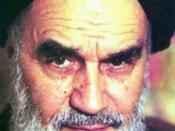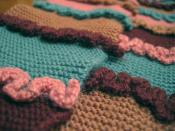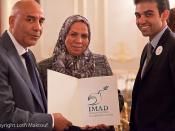Moishe Similansky's story "Latifa" and Farnoosh Moshiri's story "The Crazy Dervish and the Pomegranate Tree: A Mystic Tale" both rely on a knowledge of the historical and religious aspects of Palestine and Iran. The impact of the Iranian Cultural Revolution and the Arab-Jewish conflict affected the lives of the characters in many ways, also the religious customs and cultures.
The Iranian Cultural Revolution was the cause of Naroo and the dervish to part ways. When the Black-Flaggers stoned Naroo something came over the dervish, like a young lad he grabbed the rifle and shot the man who struck Naroo with the stone and a couple other men as well. The black - flags were also a barrier for the dervish for he couldn't go to the poet's tombstones. Every time the dervish tried to go "home" he was beaten by the guards. Now the dervish found a new home close to the marble tombstone, under a dead pine tree for shelter.
Another, encounter the dervish and Naroo had with the Black-Flaggers was when while living in the no man's land the Black-Flaggers kept a close eye on him with binoculars. They finally left the dervish alone when after looking at his prison records decided that if he wasn't worth a bullet then so then he's not worth a bullet now either. If the Black-Flaggers found out that Naroo was living with him in the hut, these men would have taken her away and killed him.
Contrastingly, in Similansky's story "Latifa" both Hawaja and Latifa are not in the middle of a Palestinian Revolution, but are rather dealing with the after math of the war among the Muslims and Jews. Hawaja, a Jew loves Latifa, a Muslim girl, but due to the war both can't be together. Latifa's father Sheikh Surbaji...


